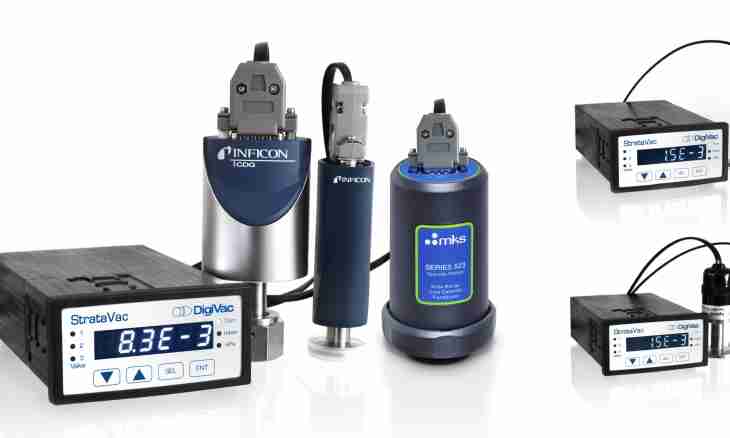Discharge is called pressure is lower atmospheric, and a vacuum - deep discharge. The devices working at various physical principles are used to measurement of a vacuum.
Instruction
1. Compound pressure gages intend for measurement of rather superficial discharges. By the principle of action they do not differ from ordinary mechanical manometers. To connect such device, install in a rupture of a pipe the standard pneumatic T-adapter maintaining necessary discharge, and to it, similar to the manometer, attach the compound pressure gage calculated on necessary measurement range. Make sure of tightness of all joints. Consider that some devices of this type display an absolute value of pressure in the pipeline (as far as it below zero), and others - relative (as far as it is lower than atmospheric).
2. With lower pressure and the inert environment in a pipe use the sensor which principle of action is based on lamp filament temperature change under the influence of gas molecules on it. They take away heat from thread therefore it is cooled, at the same time its resistance decreases. Do not include at all power supply of such device when pressure is equal or close to atmospheric, and in a system there is an air.
3. At a deep vacuum the little changes of pressure influence thread temperature a little. In this case use special electrometric lamps. Their principle of action is based on the fact that the molecule of any gas is much larger than an electron therefore the in space there are less such molecules, the it is easier to fly by to electrons through it. In fact, it is the vacuum diode which is not soldered, and pneumatically it is connected to a vacuum system. Other things being equal parameters with increase in depth of a vacuum its resistance decreases. Such device cannot also be turned on in the absence of a vacuum, and it is always better to support in a system the lowered pressure. Carry out separation of the pressurizing shoot from a cylinder only just before accession.
4. For the translation of absolute value of pressure in relative values of a vacuum and vice versa use the following formulas: P otn = P of atm-P abs; P abs = P of atm-P otnzdes P abs - absolute pressure in a vacuum system, P otn - relative value of a vacuum, P atm - atmospheric pressure. All of them have to be expressed in identical units.

